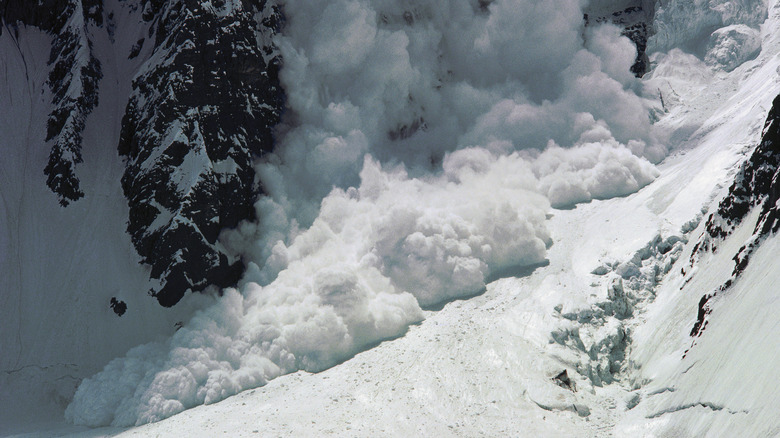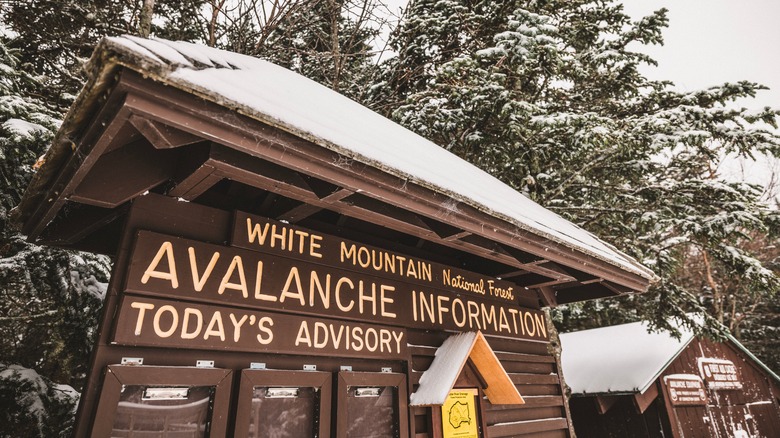Here's How To Properly Read An Avalanche Forecast
Avalanches are a legendary danger in mountainous regions and for good reason — they are one of the most common ways people die in the wilderness. While it may be surprising to some who are new to winter outdoor activities, you don't have to be in a remote mountain range halfway across the globe to be at risk. There are plenty of areas in the United States and Canada that are prone to avalanches. In fact, more than two dozen people die in avalanches each year in the United States.
Regardless of which outdoor activity you pursue, when the conditions are right in these avalanche-prone regions, you are at risk. In fact, several of the most dangerous campgrounds in the U.S. make that list due to the avalanches. Given this potentially deadly danger, it is important for any embarking on winter outdoor adventures, particularly in the mountains of the western U.S. and Canada, to know what to do if caught in an avalanche. However, it is equally important to know how to prevent putting yourself in harm's way. One of the keys to doing that is knowing how to properly read an avalanche forecast.
Although many may be unaware, the National Avalanche Center issues daily forecasts for avalanche activity. Whenever you are adventuring in an area known to have avalanches, you should check this forecast daily, just as you would the weather forecast. This should be done whether or not you will be afield that day, as it can also affect your transportation and accommodations in these areas. However, checking the forecast is one thing, but understanding an avalanche forecast is key to staying safe.
Understanding an avalanche forecast
Avalanche forecasts are predicated on a five level scale known as the North American Public Avalanche Danger Scale. The five levels, from least to greatest are: low, moderate, considerable, high, and extreme. If there is no risk, there will be no rating. So, any time there is even a low risk, you should be aware of your surroundings and watch for signs of an avalanche.
As a rule of thumb, when the forecast is low, you can go about your normal outdoor activities, but need to be alert. When the warning moves to moderate, you should avoid any natural features or areas that are more likely to see an avalanche. If the scale is considerable, you should really watch where you are and what you do. Again, you also need to take into account your path of travel. Avoid any potentially dangerous areas. Once the scale is set to high or extreme, it is really best just to avoid outdoor activities or traveling along avalanche-prone routes altogether.
Avalanche forecast centers also issue advisories, much like those issued for tornadoes. An avalanche watch means dangerous avalanche conditions are expected in the following 24 to 48 hours. You should monitor conditions and be prepared to change plans. An avalanche warning means dangerous avalanche conditions are present and an avalanche could occur at any time. You should not go near any avalanche-prone area when there is an avalanche warning. Regardless of the forecast, if you are venturing into an avalanche zone, it is a good idea to add an avalanche beacon and probe, such as the Backcountry Access Tracker S, to your essential emergency supplies.

